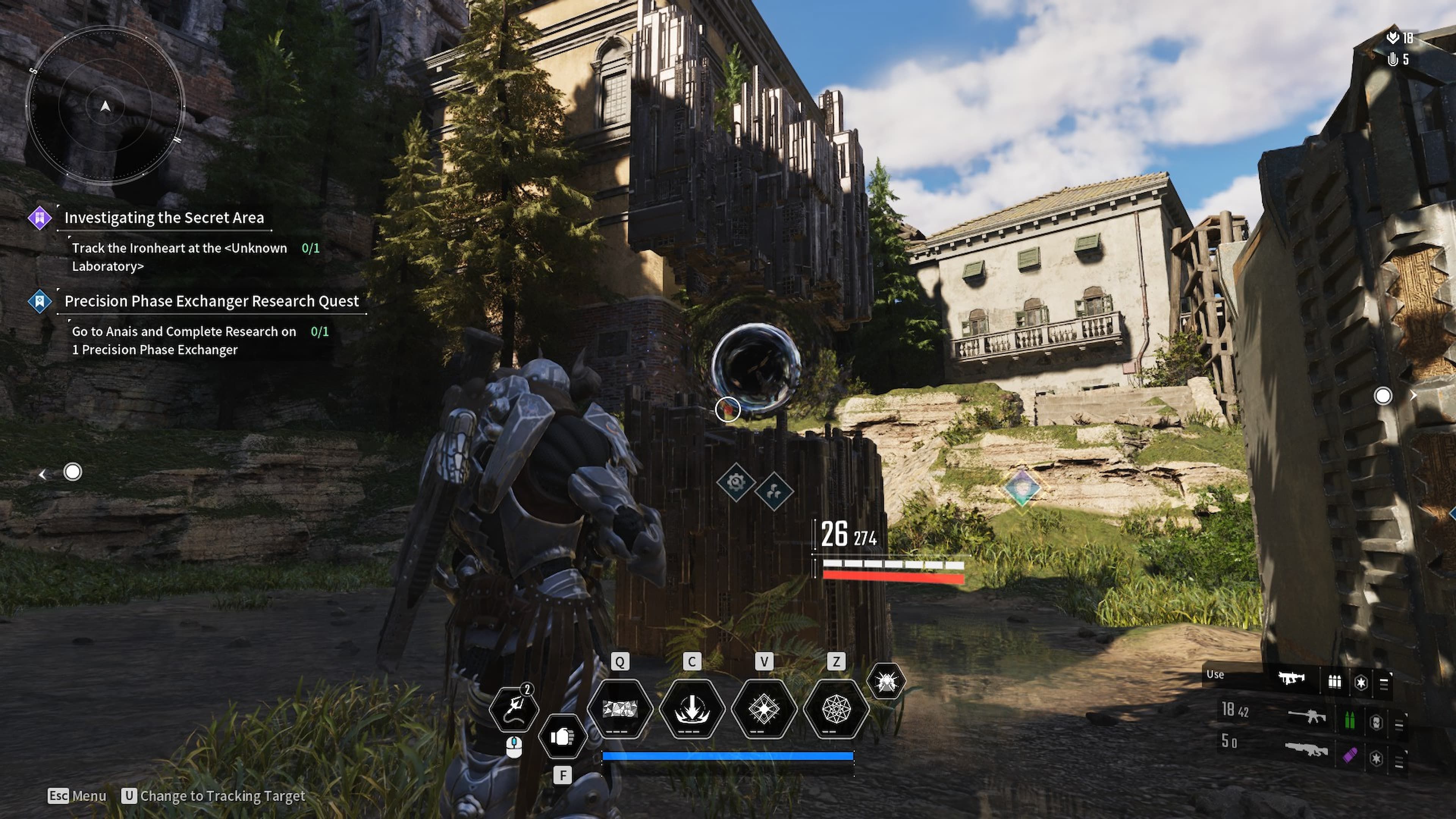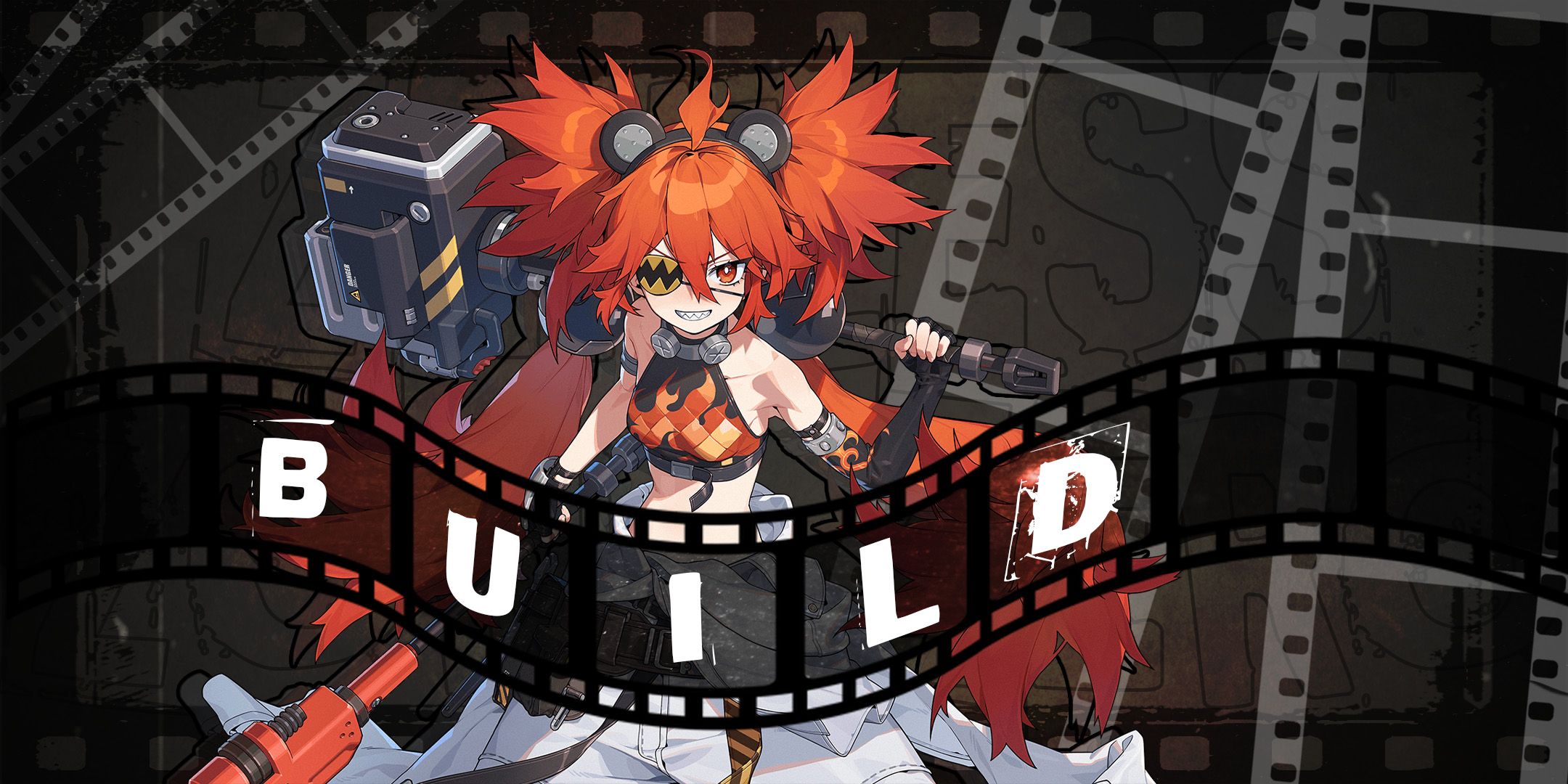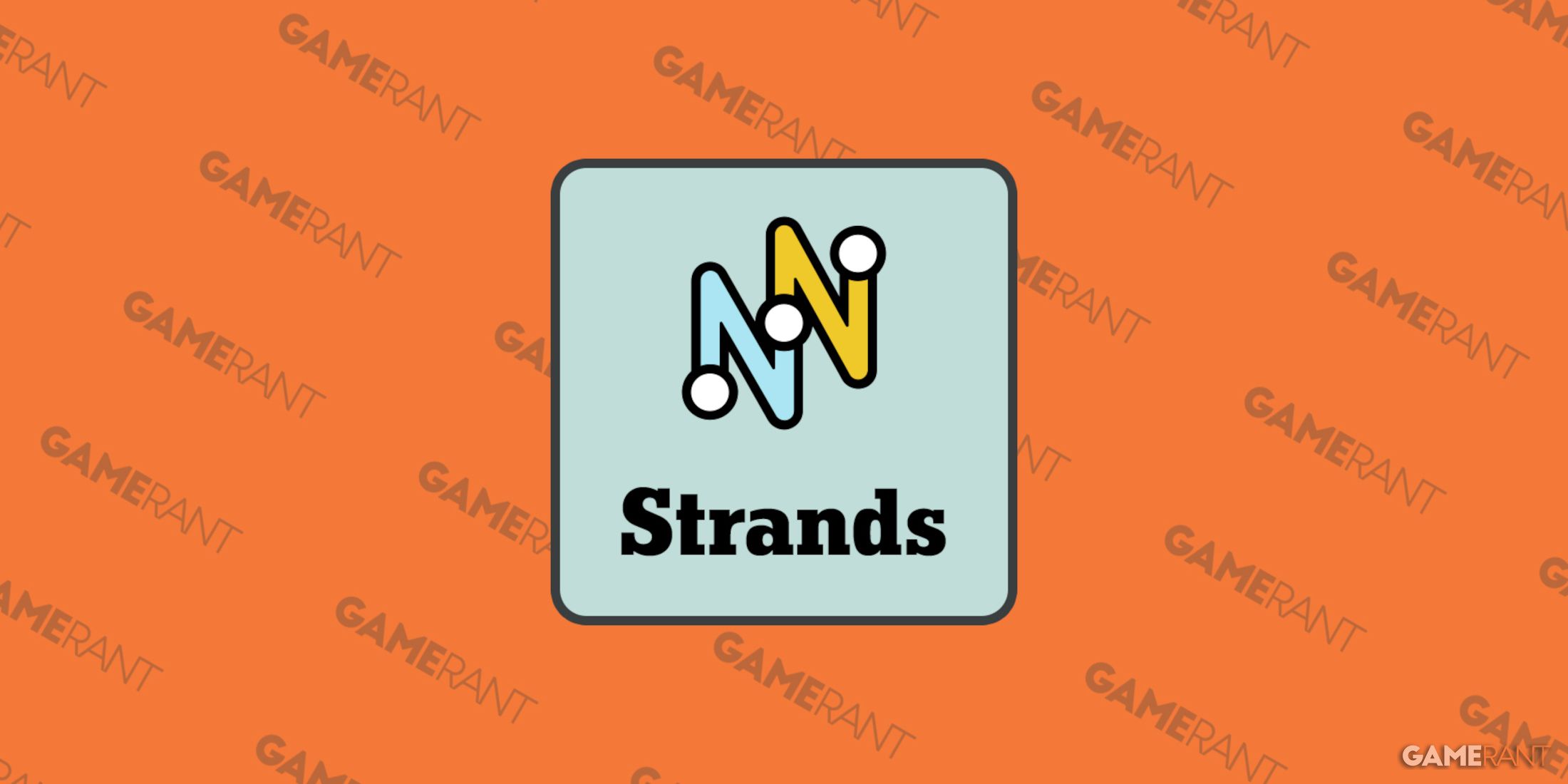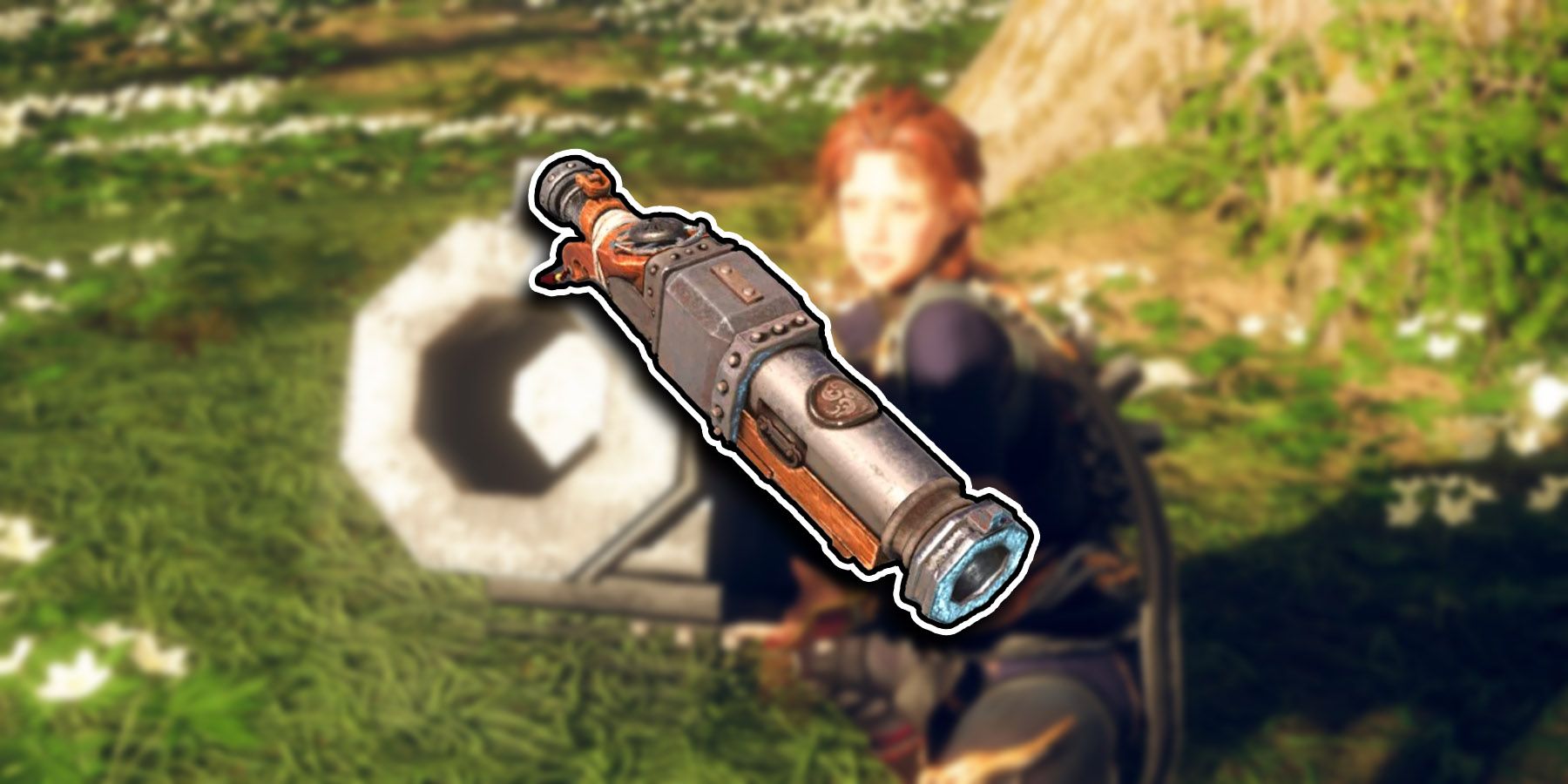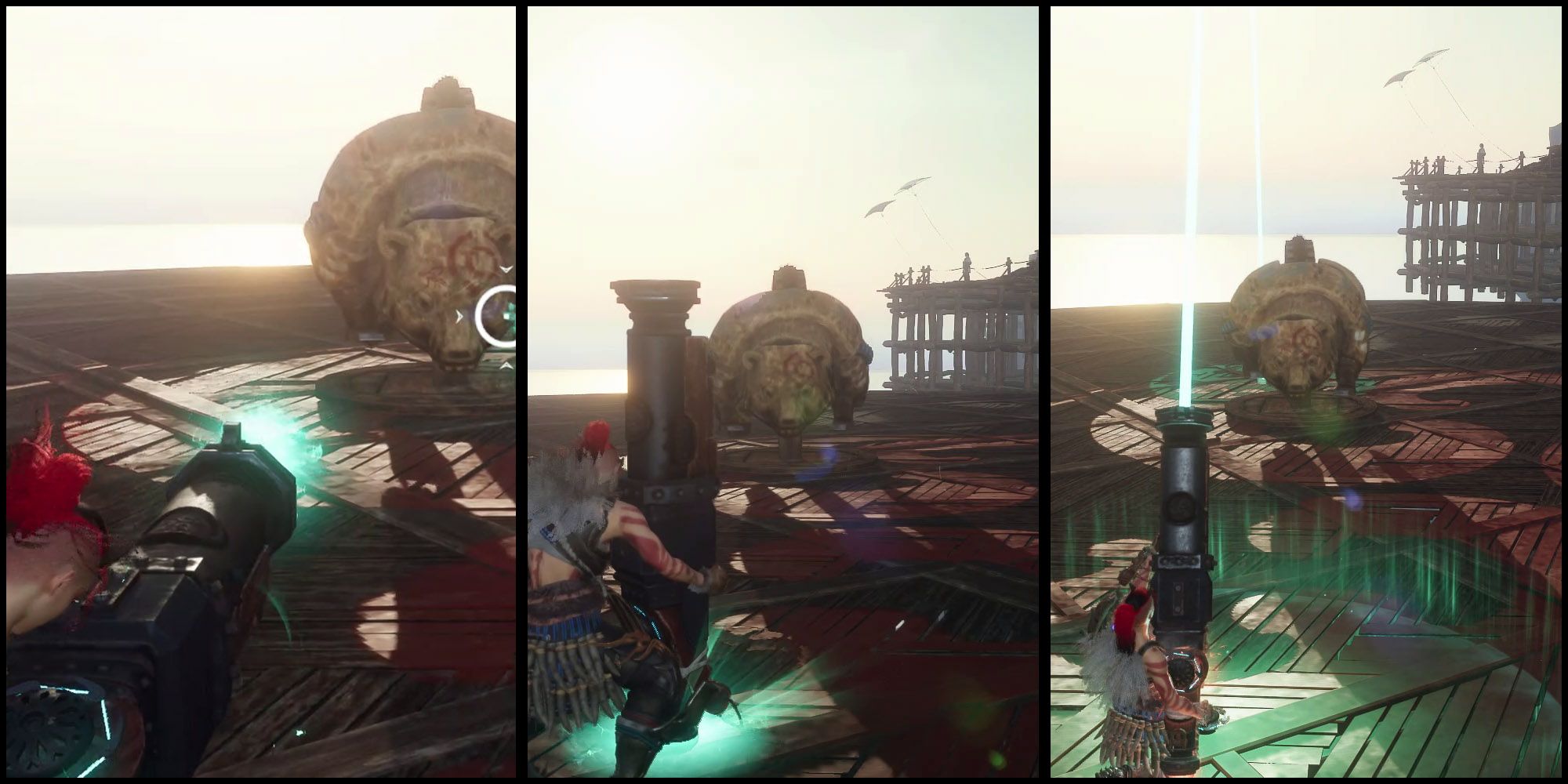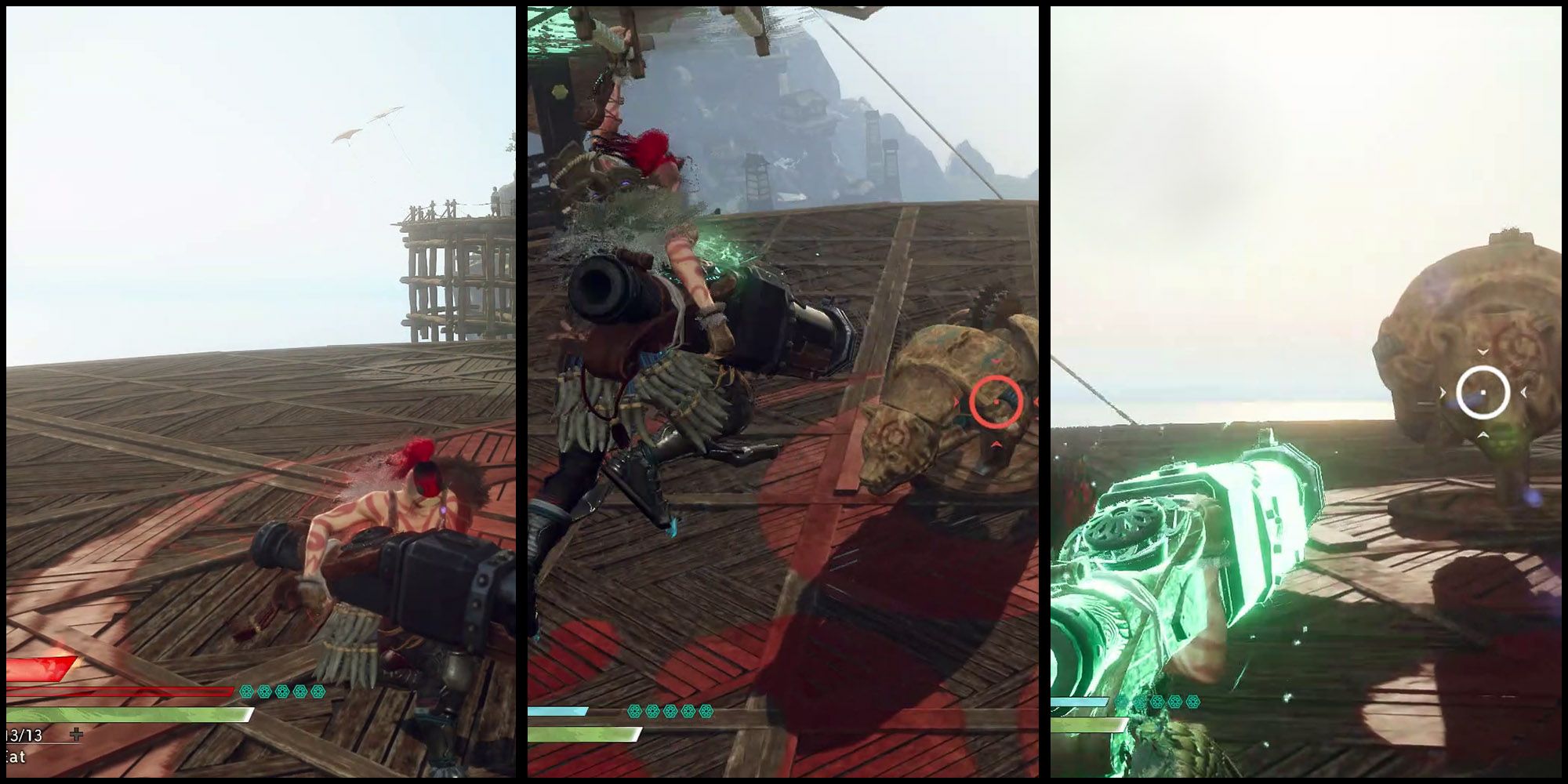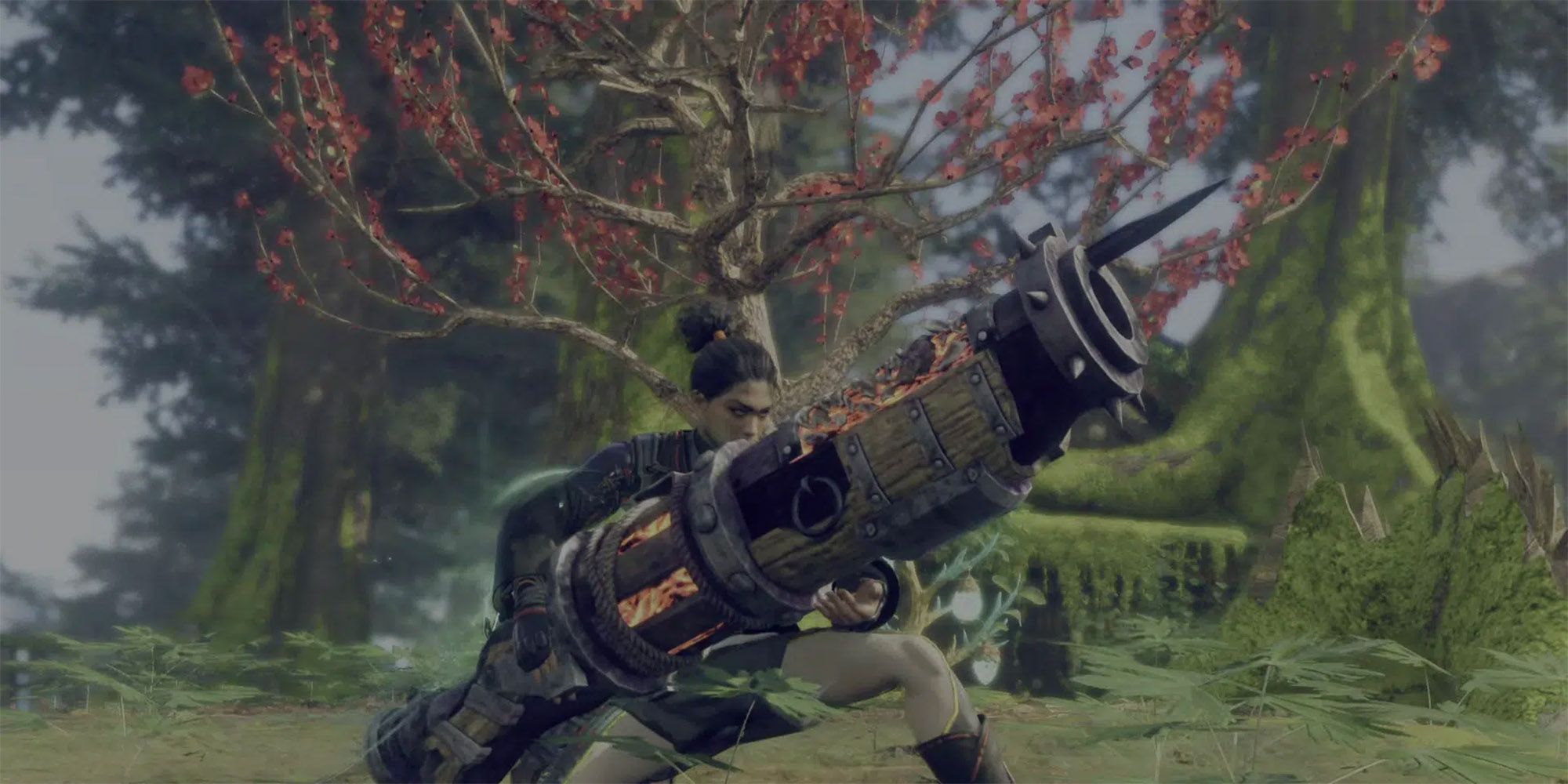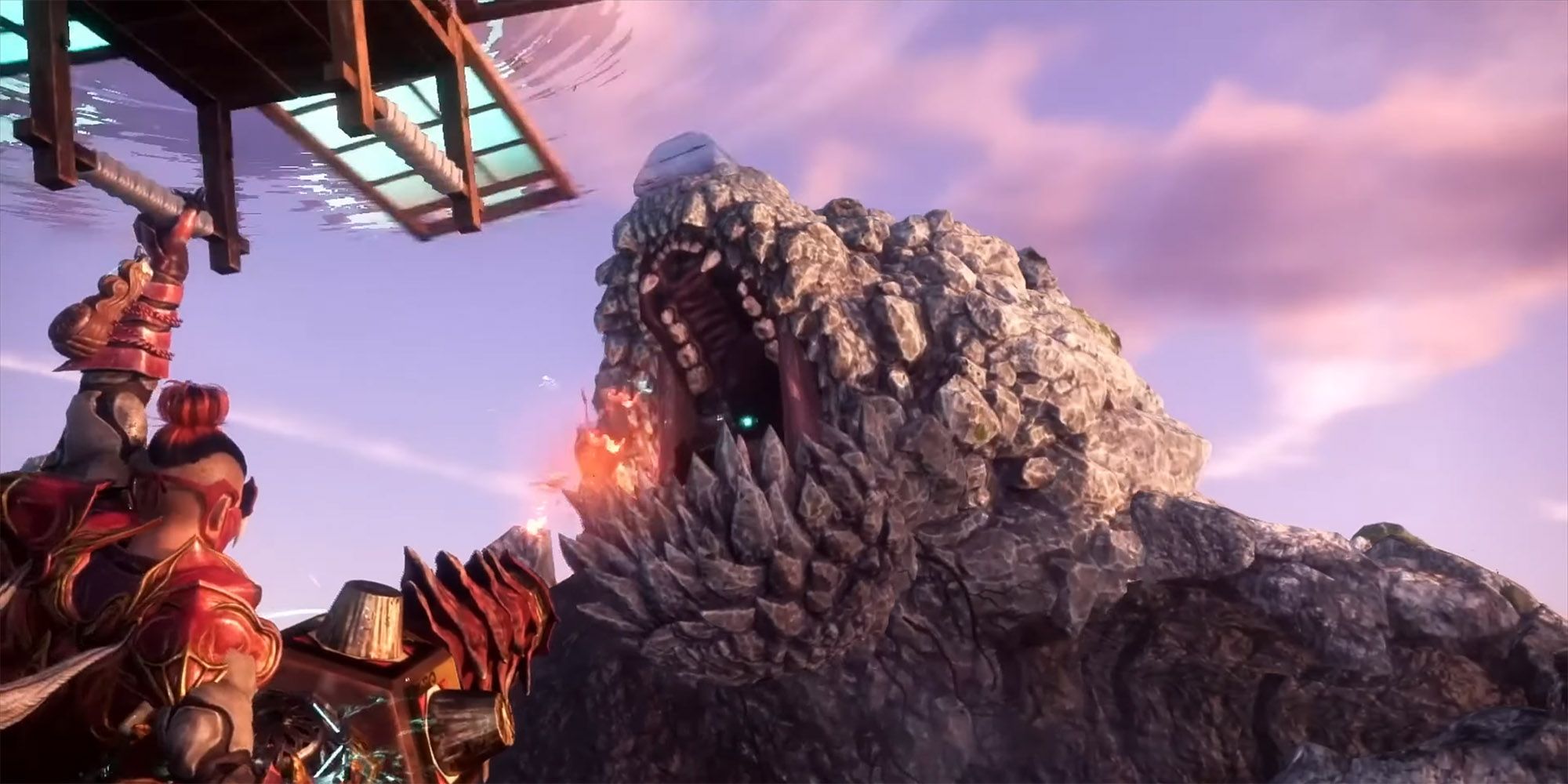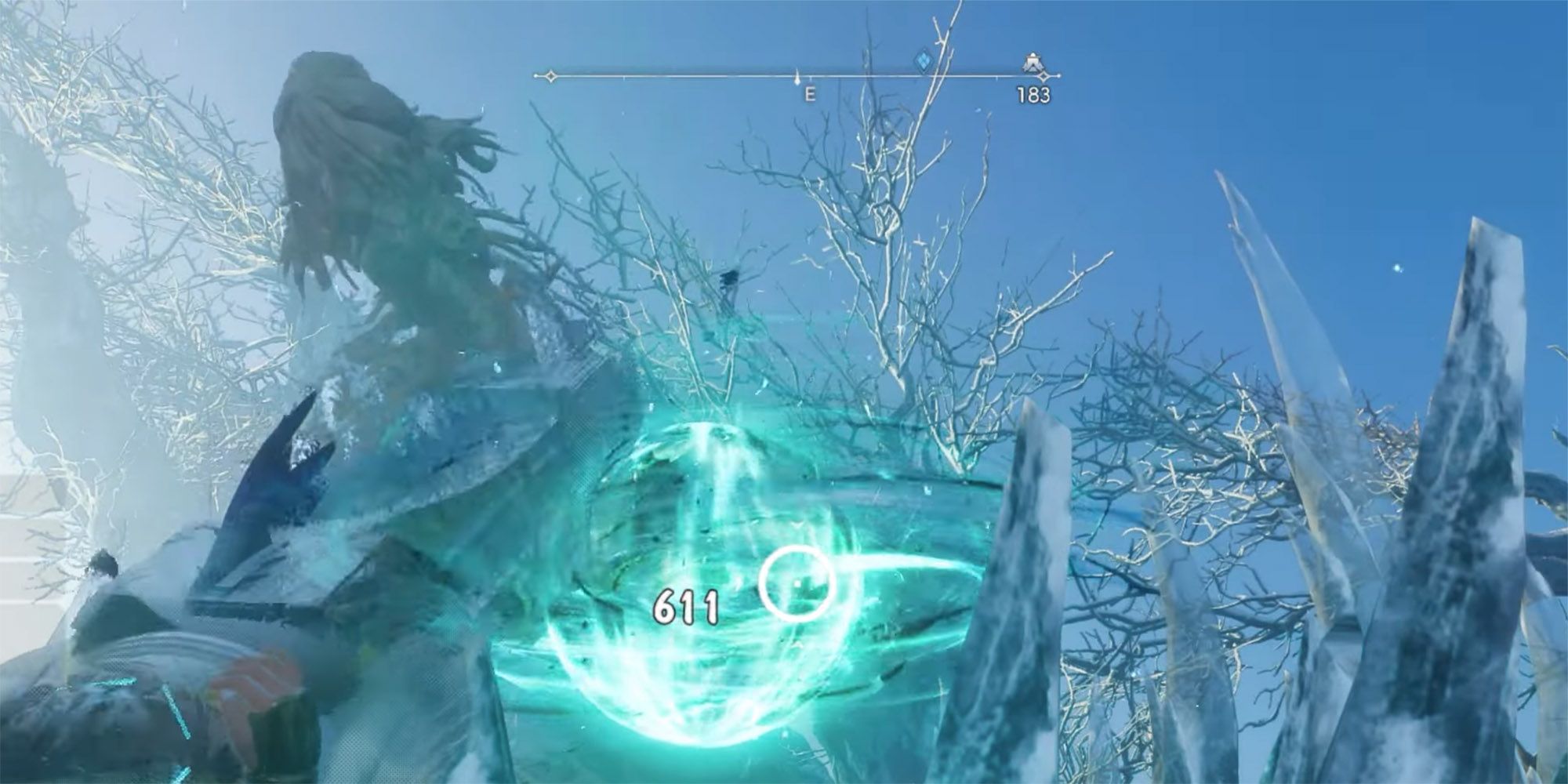The Hand Cannon is the only other ranged option in Wild Hearts besides the Bow. And, despite the fact that it's unlocked further into the game, other than the fact that both weapons fire projectiles (usually from a safe distance), that's about where their similarities end. Compared to guns or ranged weapons in similar monster-hunting titles, the Hand Cannon might seem pretty simple as it has a standard shot and a mortar shot, but that's about it, at least at a surface level.
Of course, there are also the weapon's interactions with all the Basic Karakuri in Wild Hearts and the whole Fortified Shot buildup system which is by far the most visually bombastic weapon attack in the entire game. Then, on top of all of that, the Hand Cannon also has three gauges to keep an eye on, the Heat Gauge, the Charge Gauge, and the Ki Base Gauge. So taking all these mechanics that, on their own, are relatively simple, and putting them together into one weapon (AKA the Hand Cannon) means that this weapon choice actually has a lot higher of a skill ceiling than one might expect, especially if they didn't go through its tutorial properly.
Basic Hand Cannon Mechanics & 'Combos'
Let's be blunt, the Hand Cannon doesn't really have 'Combos' as other weapons do, it's a big gun that can do different things depending on the input or Karakuri, but none of them naturally combo together outside of maybe the sequence of different inputs needed to fire a Fortified Shot. Still, it's worth going through all its individual mechanics, one by one so that players know which ones to use in specific scenarios.
- Regular Shot: Special Attack (Hold)
- Deploy Ki Base: Attack 2 (Aim-able)
- Place Ki Base: Attack 1
- Recall Ki Bases: Special Attack + Attack 1
- Absorb Fortified Ki Base: Special Attack + Attack 2 (while on Fortified Ki Base)
- Fortified Shot: Absorb Fortified Ki Base, Special Attack + Attack 2 (Channeled and Aim-able)
- Charge Gauge: Line directly over the Health Bar, basically the weapons 'ammo'. When this Gauge is empty, Regular Shots deal very little damage.
- Heat Gauge: Meter directly above Charge Gauge and Health Bar, fills in relation to Regular Shots changes color as the Cannon heats up. Once the Gauge is completely filled the Hand Cannon Overheats and cannot be used for a short duration.
- Ki Base Gauge: To the right of the Health Bar represented by 5 octagonal symbols. Each one is a Ki Base, and each grey symbol represents a deployed Ki Base while the blue symbols represent stockpiled Ki Bases. Players may only have 5 Ki Bases active at one time (without certain Skills)
This may seem like a lot of info to learn and memorize, especially two Chapters into the game, but it's actually very simple in practice. Basically, players have a standard fire, a placeable (or fireable) ammo recharge aura, an 'ultimate' attack, and a couple of easy Gauges to keep track of. In general, the 'basic' loop of Hand Cannon gameplay revolves around peppering the Kemono, building up heat, hitting them with a Fortified Ki Base, and then looking for the right moment to commit to the Fortified Shot. There's obviously a lot of room for individual playstyles, but this is where it all usually branches from.
Advanced Hand Cannon Mechanics & 'Combos'
The Fortified Shot is the Hand Cannon's most reliable damage-dealing option, and Hand Cannon players should always be aiming to get as many Fortified Shots off as possible. But, it's not all their gameplay is based around and there are multiple methods, plans of attack, and even Skills to activate the Fortified Shot faster.
For example, the Hand Cannon is one of the better weapons to prove the whole Karakuri system Omega Force added to the monster hunting sub-genre is worthwhile. It actually has some pretty interesting interactions with different Basic Karakuri that give it more utility against certain Kemono and methods of building Heat extra fast. So, here are some 'more advanced' key mechanics and Basic Karakuri interactions that players will want to know about ASAP:
- Crate Karakuri: The bread and butter option for a non-Fortified Shot build, when a Regular Shot is used after jumping off of a Crate, the hunter will use this angled shot that deals scaling damage based on their current Heat level. Great for keeping consistent DPS while managing the Heat Gauge.
- Spring Karakuri: After launching off this Karakuri, the Hand Cannon will release a 'shotgun blast' of Regular Shots in a fan formation directly in front of the hunter. This attack has a couple of different applications but is primarily used to build large chunks of Heat very quickly.
- Celestial Thread Anchor Karakuri: This also has this shotgun blast when a Regular Shot is fired after a Thread-enhanced jump, which can be better or worse for building Heat and proper positioning than the Spring depending on the circumstance.
- Glider Karakuri: basically turns a Hand Cannon hunter into an attack helicopter, allowing them to fire their Regular Shots and build Heat while still being able to hover around and control where their Glider goes. Not incredibly 'meta' or vital against most Kemono, but it's a ton of fun to use and has its moments.
- Torch Karakuri: As it does with all the other weapons, using this adds Fire Damage to the weapon's attacks for the next little chunk of time and also gives that weapon the ability to set Kemono Ablaze (which is a lesser-known Status Ailment). With the Hand Cannon specifically, it adds additional Heat per shot while active, making it probably the best option for building heat while still playing aggressively.
Some More Tips Focused On Hand Cannon Mechanics
There are, of course, more systems and mechanics to the Cannon's gameplay outside of Karakuri attacks and general gunfire. Here are a few extra tips that are bit a more system or mechanically focused:
- The Fortified Shot uses up the Charge Gauge incredibly fast, meaning it will be a very short laser barrage if the player isn't standing in a Ki Base while firing it. So, make sure to stay in the now-regular Ki Base after absorbing its Fortified energy or reposition and put down a new Ki Base before committing to the full Fortified Shot.
- A lot of high-level Hand Cannon gameplay revolves around animation canceling (which is actually a fantastic system) to save time or back out of an attack to stop it from potentially missing. Players can animation cancel by using the Karakuri Quick-build menu to place something in the middle of an animation and cut it short or even roll to quickly cancel the animation depending on the specific animation.
- The best application of this animation canceling is using it to reduce the time it takes to manually place a Ki Base.
- Any currently remaining Charge Gauge is irrelevant in building Heat. players who have optimized building high-Heat and placing a Fortified Ki Base quickly usually don't even care if their Charge Gauge is empty while firing, as it'll refill as they're setting up their Fortified Shot within the Fortified Ki Base anyway.
How To Fight Kemono With The Hand Cannon
There are two main 'branches' of builds Hand Cannon players can go for, builds centered around firing off as many Fortified Shots as possible, and builds based on hovering around nearly maxed Heat and using Regular Shots or Crate-Karakuri Attacks to deal steady yet impressive damage. Either build is absolutely applicable to use, but their gameplay differs quite a bit. Fortified Shot-focused builds are a lot more focused on building Heat from a safe spot while high-Heat builds are a lot more up close and personal with the Kemono thanks to their Crate Karakuri attacks.
Now, that's a lot of theory crafting and explanation about how to use the Hand Cannon, which is all well and good. But, how does the moment-to-moment gameplay of a Hand Cannon user actually work? How are people supposed to make split-second decisions with this thing, especially during solo play? Well:
- Despite what the core mechanics of the weapon may suggest, Cannon users are usually incredibly mobile, rarely standing and firing in Ki Bases for more than a few seconds at most.
- Use Spring Karakuri to reliably dodge in any direction in a pinch while also using the shotgun blast to build some immediate Heat. Meanwhile, use the Celestial Thread (and its mid-air shots) in battles against very fast Kemono or when the hunter wants to build up their Heat gauge in an instant.
- The Chain Trap and Harpoon Fusion Karakuri are a Hand Cannon user's best friends, either one gives them enough time to just about get their full Fortified Shot off while the Kemono is completely helpless.
- The Crossbow and Flare Fusion Karakuri (when they're unlocked) are also big windows for unleashing a Fortified Shot if used against a flying Kemono.
- Spending time collecting Tsukumo to increase the hunter's Celestial Thread count is worth it, as a Hand Cannon user typically burns through their Celestial Thread pretty quickly.
And, one of the most important things to remember is not to rush too much in Wild Hearts. Kemono don't seem to heal outside of active combat, the Cannon can remain in its pre-Fortified Shot state for multiple minutes at a time, and Ki Bases don't just 'fade away' after a short duration. This allows Cannon users to focus on repositioning perfectly and setting up the perfect moment for that juicy Fortified Shot.
Why Choose The Hand Cannon?
And finally, why even choose the Hand Cannon? What does the Hand Cannon have over the other 7 weapons in Wild Hearts? Why should players pick it and what type of person is it most suited for? Well, first off, it's a perfect weapon for players who:
- Love the concept of being a walking tank/railgun.
- Want to inflict Status Ailments on Kemono like it's their one and only job.
- Like using weighty and high-damage weapons in games but aren't big into the Maul or Nodachi.
- Struggle with the up-close combat in monster hunting games, especially with the camera in Wild Hearts.
- Like the concept of a more 'complex' weapon with multiple Gauges to keep track of, but don't want to get buried in complicated mechanics.
Basically, it's for people who like the concept of a ranged weapon in a monster-hunting game, but aren't big fans of bows. And that's about everything for the Hand Cannon in Wild Hearts. Of course, as of the time of writing this, the game has only been out for a little more than a week, so it's almost a sure thing that there will be more tricks and tips figured out about this weapon as time goes on. But, for now, this is about everything a player should need to know before fully committing to the Cannon as their weapon of choice.
Wild Hearts is out now on PC, PS5, Xbox Series X, and Xbox Series S

